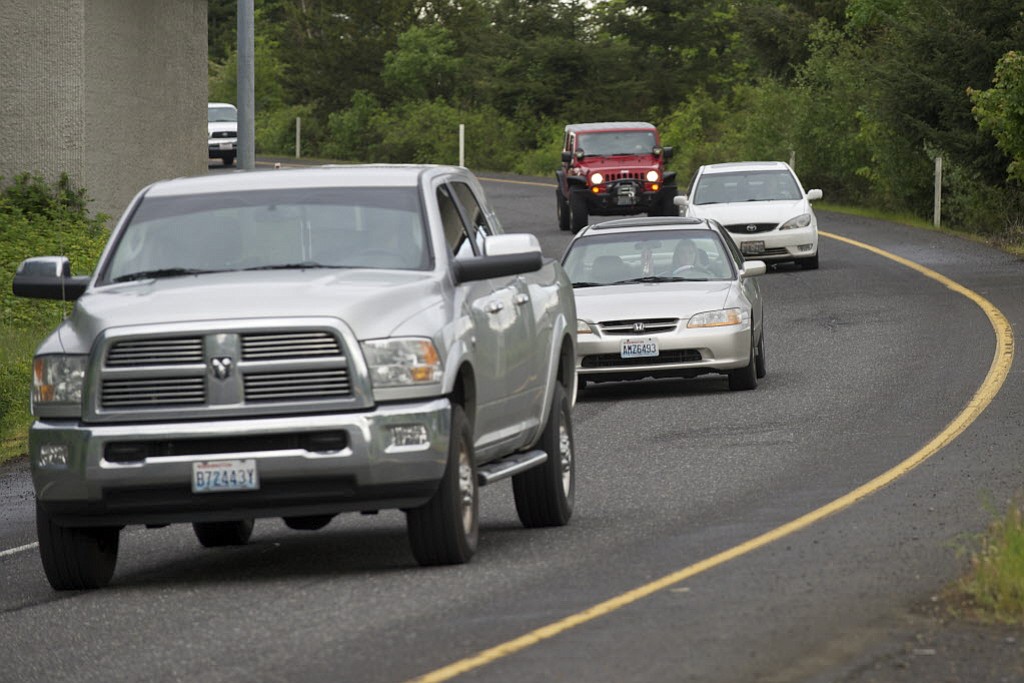The list of Clark County’s most congested corridors likely wouldn’t surprise most regular commuters.
You’ll find the usual suspects: Interstate 5, Interstate 205 and state Highway 14. All three function at or even above capacity during peak travel times. Traffic crawls far below the speed limit at times.
But not all of the county’s problematic corridors are freeways.
In the afternoon, Northeast 18th Street between Northeast 112th and 162nd avenues is at full capacity, according to traffic data. Northeast Fourth Plain Road in the Orchards area is also nearly full, and often moves at less than half the speed limit during the afternoon rush hour.
All are highlighted in a congestion report updated yearly by the Southwest Washington Regional Transportation Council. The RTC board last week endorsed the latest look at its Congestion Management Process, which also tracks trends and outlines general strategies.
But RTC is a high-level planning organization. Actually fixing the corridors falls to the jurisdictions that manage them, such as the city of Vancouver and the Washington State Department of Transportation.
Some, such as Northeast 18th Street, remain a work in progress. The city widened a segment of the roadway near Northeast 112th Avenue in 2012, spokeswoman Loretta Callahan said in an email. Expansion of the next section of 18th Street, between Four Seasons Lane and Northeast 138th Avenue, could begin construction next year, she said. But the city doesn’t currently have funding to improve other segments of 18th Street, she added.
Traffic on 18th Street could become even more crowded next year with the completion of a new interchange connecting it directly to I-205. The city expects traffic to increase with that change, Callahan said.
On Fourth Plain, the congested stretch between Northeast 117th and 162nd avenues is “fully built out” and unlikely to see added capacity, Callahan said. Instead, strategies may include traffic control upgrades or changes to connecting corridors — provided that resources are available, she said.
“The ability of the city to deal with these ongoing, important issues will be dependent on establishing a long-term, sustainable street funding, which is a goal of the Vancouver City Council,” Callahan said.
For WSDOT, solutions don’t always mean big-ticket projects and new pavement, said spokesman Bart Treece.
“We start small to see what kind of minor operational adjustments or tweaks we can make,” Treece said.
At the interchange joining I-205 and state Highway 500, for example, WSDOT used new striping in 2013 to shift the orientation of through lanes and merge points. Conditions improved. Another adjustment could happen in the same area as early as next year, Treece said.
The agency also encourages commute trip reduction through carpooling and transit, Treece said. Travel-time signs along I-5 are set to go live later this summer. Ramp meters are another available tool, Treece said, though not commonly used in Clark County.
Of course, small fixes only buy so much relief when a corridor is in need of a more significant upgrade. But pulling the trigger on a larger project depends on numerous factors, including available funding and evolving needs, Treece said.
“Traffic does change,” he said. “We do have growth in the area.”
The Washington Legislature on Friday finalized a $16 billion transportation revenue package that will raise the state gas tax and deliver a handful of projects to Clark County. Those include new I-5 interchanges at Mill Plain Boulevard and Northeast 179th Street.
Regional traffic volumes on major corridors have grown in the years since the recession. Planners expect that trend to continue in Southwest Washington.
“This year, particularly on the bridge corridors, we’re seeing a jump back up above pre-recession levels,” said RTC Executive Director Matt Ransom.
Traffic counts on both the I-5 and I-205 bridges are well documented and well known. Both spans have seen their volumes rise in recent years. Total trips across the Columbia River between Vancouver and Portland are at an all-time high, according to RTC.
As jurisdictions build out their transportation systems, planners may shift their focus more on management and less on expansion, Ransom said. Clark County, for one, has placed an increased emphasis on coordinating traffic signals through new technology and found good results.
Any change is done with safety in mind, Treece said.
“Congestion and collisions are closely related,” he said.




